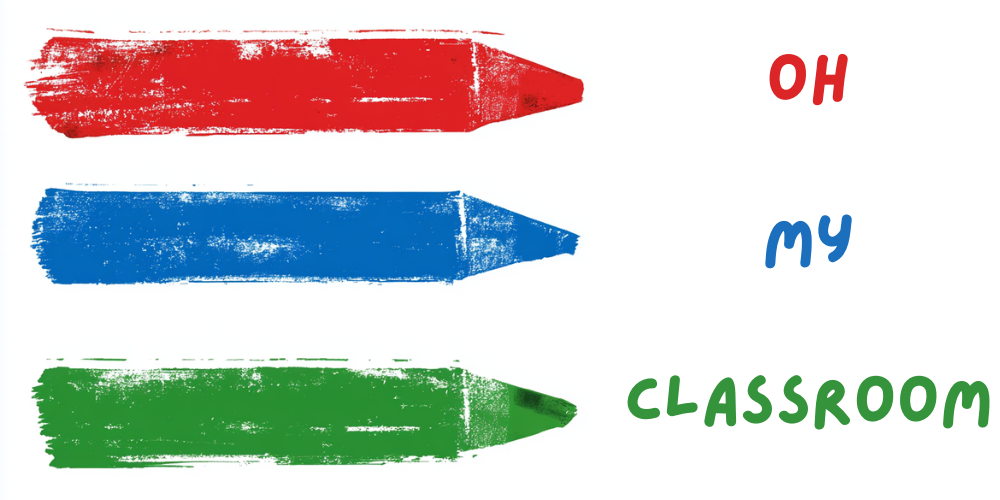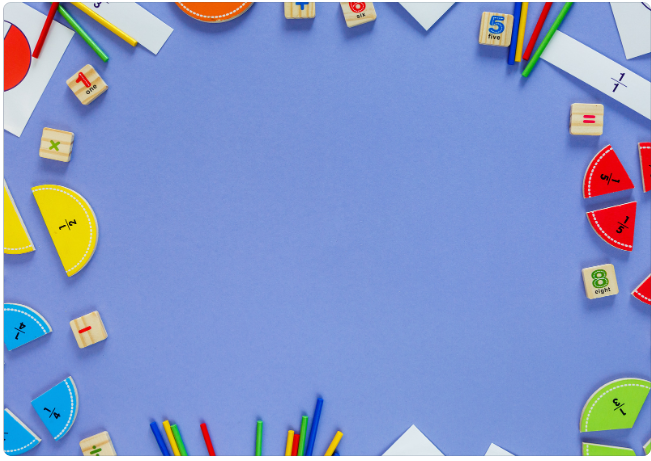Introducing fractions to preschoolers can be an exciting and interactive experience.
By engaging them in hands-on activities, you can help them develop a strong foundation in understanding fractions.
These activities not only make learning fractions enjoyable but also enhance their critical thinking and problem-solving skills.
From fraction pizzas to fraction art, there are endless opportunities to explore this mathematical concept.
We will present fun fraction activities for preschool kids, ensuring a playful and educational experience for young learners.
Let’s dive in and discover the joy of fractions together!
Fraction Pizza Party:
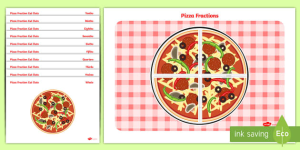
Invite your preschoolers to a fraction pizza party! Provide them with circular cutouts representing pizzas and various toppings like cheese, pepperoni, and vegetables. Divide the pizza into equal parts and guide the children to create different fraction combinations using the toppings. For example, they can place pepperoni on half the pizza or cheese on one-fourth of the pizza. This activity allows them to visually understand fractions as parts of a whole while enjoying a delicious imaginary treat.
Fraction Collage:

Encourage your preschoolers to create a fraction collage using magazine cutouts or construction paper. Provide them with different shapes, such as rectangles, squares, and circles. Ask them to cut the shapes into halves, thirds, or quarters, and then arrange and glue them onto a larger sheet of paper to form a collage. This activity promotes creativity and helps children visually grasp the concept of fractions by manipulating and combining different parts.
Fraction Walk:

Take your preschoolers on a fraction walk around the classroom or outdoor area. Provide them with fraction cards that depict various fractions, such as 1/2, 1/3, and 1/4. As you stroll, ask the children to find objects or items that match the fractions on their cards. For example, they can spot a fence that is divided into halves or a flowerpot that is divided into thirds. This activity engages their observational skills and reinforces their understanding of fractions in real-world contexts.
Related: 20 Colorful Clay Activities for Preschoolers
Fraction Sundaes:

What better way to learn fractions than through ice cream sundaes? Provide each child with a scoop of ice cream and a variety of toppings, such as sprinkles, chocolate chips, and whipped cream. Guide them to divide their scoops into halves, thirds, or quarters using different toppings to represent the fractions. For instance, they can place sprinkles on half the ice cream or add whipped cream to one-fourth of the scoop. This activity combines hands-on fun with a tasty treat, making fractions even more enjoyable.
Fraction Bingo:

Play a lively game of fraction bingo with your preschoolers. Create bingo cards with various fractions written on them, such as 1/2, 1/3, and 1/4. Use small objects like buttons or coins as markers. Call out different fractions, and the children cover the corresponding fractions on their cards. The first one to cover a row or complete their entire card shouts “Bingo!” This activity reinforces fraction recognition and encourages children to quickly identify and understand different fractions.
Fraction Hopscotch:
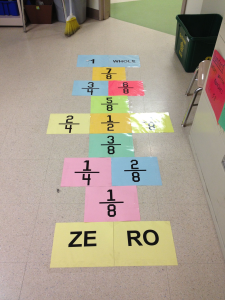
Create a fraction hopscotch grid using chalk or tape on the floor. Divide each square into equal parts and label them with different fractions, such as 1/2, 1/3, and 1/4. Have the children take turns hopping on the fractions you call out, encouraging them to visually and physically experience fractions as they move along the hopscotch path.
Related: 20 Helpful Grief Activities for Elementary Students
Fraction Puzzles:

Provide preschoolers with fraction puzzles consisting of different shapes divided into fractions. Each puzzle piece represents a fraction, and the children have to match them to complete the whole shape. This activity enhances their spatial awareness and understanding of fractions as parts of a whole.
Fraction Sorting:

Set up a fraction sorting activity using various objects or manipulatives. Have a collection of objects that can be divided into equal parts, such as toy cars, building blocks, or snacks. Ask the children to sort the objects into different containers based on their fractional representation, such as objects that can be divided into halves, thirds, or fourths. This activity helps them develop classification skills while reinforcing their understanding of fractions.
Fraction Number Line:

Create a large number line on the floor or a wall, labeling it with whole numbers. Provide preschoolers with fraction cards representing different fractions. Instruct them to place the fraction cards in the correct positions on the number line. For instance, a card showing 1/4 should be placed between the whole numbers 0 and 1. This activity strengthens their understanding of fractions in relation to whole numbers and helps them visualize the concept on a number line.
Fraction Booklet:

Help the preschoolers create a fraction booklet. Provide them with small blank booklets or folded sheets of paper. On each page, they can draw and color shapes divided into different fractions. Encourage them to write the corresponding fraction next to each shape. They can even create a cover page for their booklet. This activity promotes creativity, fine motor skills, and fraction representation.
Fraction Playdough:

Provide the children with different colors of playdough and ask them to create various shapes. Then, guide them to divide the shapes into equal parts to represent fractions. For example, they can split a playdough circle in half, thirds, or quarters. This activity allows for tactile exploration of fractions and encourages creativity.
Fraction Measurement:
Introduce the concept of fractions through measurement. Provide preschoolers with rulers or measuring tapes and objects of different lengths. Ask them to measure and compare the lengths of objects, using fractions to describe the measurements. For instance, a pencil might be 1/2 the length of a crayon. This activity combines measurement skills with fraction understanding.
Fraction Guessing Jar:

Fill a transparent jar with small objects, such as buttons, beads, or cereal pieces. Beforehand, count the total number of objects in the jar. Show the jar to the preschoolers without revealing the exact number. Ask them to guess the fraction of objects they think are of a particular color or shape. For example, “What fraction of the objects do you think are blue?” This activity encourages estimation skills and introduces the concept of fractions as parts of a whole.
Fraction Pattern Blocks:

Provide preschoolers with pattern blocks of different shapes and colors. Guide them to create various designs using the blocks. Encourage them to identify and describe the fractions of each shape used in the design. For example, they might use two triangles and one hexagon, representing 2/3 of the blocks used. This activity enhances spatial awareness and fraction recognition.
Fraction Memory Game:

Create a fraction memory game by making pairs of cards. On each card, draw a simple shape divided into different fractions, such as circles divided into halves, thirds, or quarters. Shuffle the cards and place them face down. Have the preschoolers take turns flipping over two cards, trying to find matching pairs. When a match is made, they have to name the fraction represented on the cards. This activity improves memory skills and reinforces fraction identification.
Fraction Snack Time:

Turn snack time into a fraction learning activity! Provide a variety of snacks, such as crackers, fruit slices, or cheese cubes, and ask the children to divide them into equal parts to represent fractions. For example, they can cut a cracker into halves or divide a slice of apple into quarters. As they enjoy their snacks, they can discuss the fractions they created.
Fraction Dominoes:

Create a set of fraction dominoes by writing different fractions on rectangular cards. Mix them up and distribute them among the preschoolers. Instruct them to take turns matching fractions that are equivalent or add up to one whole. For instance, if one card shows 1/4, they can match it with another card showing 3/4. This activity reinforces fraction equivalence and addition.
Fraction Balancing Act:

Provide preschoolers with a balance scale and a set of objects that can be divided into equal parts, such as building blocks or toy fruits. Ask them to explore and experiment by placing different fractions of objects on each side of the scale to create balance. For example, they can balance two halves with one whole or three thirds with one whole. This activity promotes visualizing fractions as equal parts and develops a sense of balance and symmetry.
Fraction Number Hunt:
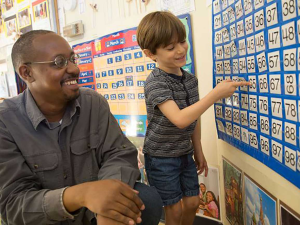
Create a number hunt activity by placing number cards around the room or outdoor area. Each number card should have a fraction written on it. Provide the preschoolers with magnifying glasses and ask them to search for the numbers and identify the corresponding fractions. For example, they might find the number 4 and realize it represents 1/4. This activity combines number recognition with fraction understanding.
Fraction Building Towers:
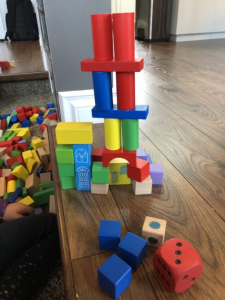
Provide preschoolers with building blocks or construction materials and challenge them to build towers using specific fractions. For example, ask them to create a tower that is half blue blocks and half red blocks or a tower that is one-fourth yellow blocks and three-fourths green blocks. This activity combines hands-on building with fraction understanding and encourages spatial reasoning.
